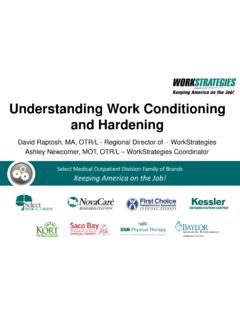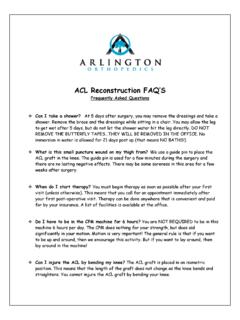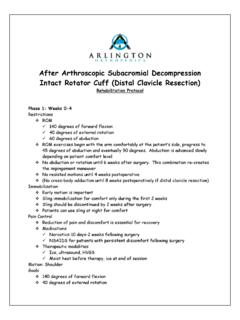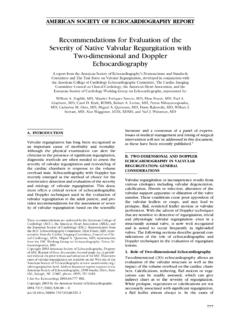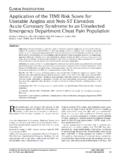Transcription of Functional Capacity Evaluation - The Arlington Group
1 Functional Capacity Evaluation David Raptosh, MA, OTR/L Regional Director of WorkStrategies Select Physical Therapy / NovaCare Rehabilitation Functional Capacity Evaluation An objective and comprehensive assessment of an individual s physical and Functional abilities Used to determine an individual s ability to safely perform work related physical demands and meet positional tolerance demands What is a Functional Capacity Evaluation (FCE)? A systematic process of measuring and developing an individual s Capacity to dependably sustain performance in response to broadly defined work demands. Leonard N. Matheson, PhD., Anderson GBJ, Demeter SL, Smith GH, eds. Disability Evaluation .
2 Functional Capacity Evaluation . Chicago, IL: Mosby Yearbook, 1996 Functional Capacity Evaluation An administrative assessment of the extent to which an individual's medically determinable impairment(s), including any related symptoms, such as pain, may cause physical or mental limitations or restrictions that may affect his or her Capacity to do work- related physical and mental activities. SSR 96-4p, "Titles II and XVI: Symptoms, Medically Determinable Physical and Mental Impairments, and Exertional and Non-exertional Limitations. Residual Functional Capacity What an individual can still do despite his or her limitation. SSR 96-8p: POLICY INTERPRETATION RULING TITLES II AND XVI: ASSESSING RESIDUAL Functional Capacity IN INITIAL CLAIMS.
3 Does not represent the least an individual can do despite his or her limitations or restrictions, but the most. FCE Any Occupation Used to quantify worker traits in dealing with common physical work demands such as sitting, standing, walking, balancing, climbing, reaching, stooping, kneeling, crouching, lifting, carrying, pushing and pulling listed in the Dictionary of Occupational Titles, Fourth Edition when there is no specific job to which the worker will return. Cheng, Andy Shu-Kei, Cheng, Stella Wai-Chee, The Predictive Validity of Job Specific FCEs on the Employment Status of Patients with Non-Specific Low Back Pain. JOEM., Volume 52, Number 7, July 2010. FCE Own Occupation Requires a specific job to which the returning worker is known and a job analysis or accurate job description have already been conducted to identify the critical job demands (Own Occupation).
4 Should include a specific match of the physical abilities of the worker to the physical demands of a specific job. Cheng, Andy Shu-Kei, Cheng, Stella Wai-Chee, The Predictive Validity of Job Specific FCEs on the Employment Status of Patients with Non-Specific Low Back Pain. JOEM., , July 2010. FCE Work Capacity Evaluation Used to determine the potential for the worker to be able to withstand the basic demands of competitive employment particularly full-day workplace tolerance and daily attendance. Hart, D L DL; Isernhagen, S J SJ; Matheson, L N LN. Guidelines for Functional Capacity Evaluation of people with medical conditions. The Journal of orthopaedic and sports physical therapy, 18.
5 6, December 1993: 682-686. How does a physician determine if an individual can return to work? Physical Examination? Diagnostic Testing? Subjective Reporting? Experience? Educated Guess or Estimation? Netherlands Study The IPs change their judgment of the physical work ability of claimants with MSDs in the context of disability claim procedures more when FCE information is provided. Physical work ability is not only important in situations of disability claim procedures, but also in RTW and rehabilitation programs. Wind, H, Goutte, V, Kuijer PPFM, Sluiter JK, Frings-Dresen MHW , Effect of Functional Capacity Evaluation information on the judgment of physicians about physical work ability in the context of disability claims.
6 , Int Arch Occup Environ Health. 2009 October 82(9): 1087-1096. FCE Time Frame 3 to 4 hours dependent upon the Functional ability of the individual Dependent upon the job specific nature of the testing process. Dependent on whether the testing is for work tolerance levels for an 8 hour day or a job match for physical demand functioning Overview of the Physical Demand Levels of Work Sedentary Light Medium Heavy Very Heavy Sedentary Work 10 pounds of force occasionally and/or negligible amount of force frequently or constant sitting most of the time walking or standing occasionally may be required Light Work Up to 20 pounds of force occasionally and/or Up to 10 pounds of force frequently Walking and/or standing usually required for more extended periods of time Medium Work Up to 50 pounds of force occasionally and/or Up to 20 pounds of force
7 Frequently and/or Up to 10 pounds of force constantly to move objects Heavy Work Up to 100 pounds of force occasionally and/or Up to 50 pounds of force frequently and/or Up to 20 pounds of force constantly to move objects Very Heavy Work > 100 pounds of force occasionally and/or > 50 pounds of force frequently and/or > 20 pounds of force constantly to move objects Frequency of Work Demands Occasional: 0 - 33% of the workday or up to 2 hours per day. Frequent: 34 - 66% of the workday, 2 to 5 hours per day. Constant: 67 - 100% of the workday, > 5 hours per day. Department of Labor, Dictionary of Occupational Titles, Fourth Edition, Revised , 1991, p.
8 1003. FCE Testing Components Intake Interview Musculoskeletal Exam Aerobic Capacity Assessment Performance Consistency Testing Material Handling Positional Tolerance Testing Exit Testing Intake Interview Patient Demographics Medical History Treatment History Subjective Pain Report Subjective Capabilities/Limitations Vocational History Sitting Tolerance Baseline HR , BP, Respiratory Rate HR <100 BP <160/100 FCE Musculoskeletal Screen Assessment with objective measurements compared to Functional abilities throughout testing Gait Posture Flexibility Range of Motion Muscle Strength Neurological Special Tests Waddell s Example: Lumbar ROM Flexion: The individual is asked to forward bend as far as possible.
9 The reading from the inclinometer at S1 is subtracted from the reading of the inclinometer at T12. Extension- The individual is asked to extend backward from the waist as far as possible. The inclinometers are read from the inclinometer at S1 is subtracted from the reading of the inclinometer at T12 Side Bending: The inclinometers are read from the inclinometer at S1 is subtracted from the reading of the inclinometer T12. Waddell s Testing Non-Organic Physical Signs Tenderness Simulation Distraction Regional Disturbance Over-Reaction Scoring: If three or more of the categories are positive, then the findings are clinically significant for non-organic low back pain.
10 Aerobic Capacity /Endurance Test PURPOSE: Determine patients cardiovascular response to stressful activity Predict Max VO2 for classification of aerobic Capacity for age and gender. Determine Functional MET level in comparison to an 8 hour work day Isometric Consistency Testing Statistical consistency: Coefficient of Variation (CV) The coefficient of variation represents the ratio of the standard deviation to the mean, and it is a useful statistic for comparing the degree of variation from one data series to another. Isometric push, pull Hand grip strength Hand pinch strength Maximal Voluntary Effort Testing Interpreting the MVE Results Interpreting Grip Strength Testing MVE Left Grip Strength02040608010012345 Handle PositionPounds of ForceSeries1 5 position grip testing When 5 test positions are plotted, the means should fall into a bell shaped curve even in those with impairment.
